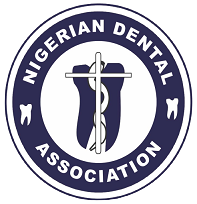Comparative study of analgesic effectiveness of single doses of paracetamol and ibuprofen in a dental pain model
DOI:
https://doi.org/10.61172/ndj.v21i2.57Keywords:
analgesic effectiveness, dental pain, pharmacologic managementAbstract
Objective: The overall aim of this study is to evaluate the analgesic effectiveness of paracetamol and ibuprofen in the pharmacologic management of acute post-operative dental pain.
Method: This study employed the visual analogue scale to measure the effectiveness of single doses of ibuprofen and paracetamol over a six-hour period, following a third molar surgery in a homogenous study population, matched for age, body mass index (BMI) and gender. Alarms were set to remind patients to score pain intensity at time point 0.5, 1.0, 1.5, 2.0, 2.5, 3.0, 4.0, 5.0 and 6.0 hours, post-dosing. A measure of the difference between the pain scores at the various time interval and that at the basal level (time 0) is the pain intensity difference (PID) at the various time intervals. Data obtained were analysed, using the SPSS version 16.0. (Chicago, IL, USA). Inferential statistics used include Chi squared test and a two-way analysis of variance (ANOVA). P<0.05 was considered significant.
Result: Ibuprofen showed a statistically significant superiority over paracetamol from time 2.5 hours to the sixth hour (P<0.05). There is no significant difference between paracetamol and placebo (P>0.05). The difference per dose prices of ibuprofen and paracetamol is negligible. Probability of developing significant pain following use of paracetamol is greater than 0.9, the relative risk is 1.10 and the odds 10.3, C.I. 95%.
Conclusion: This study concludes that ibuprofen is significantly more efficacious than paracetamol in the management of post-surgical dental pain and suggests that paracetamol should not be prescribed as a sole agent for analgesia after a third molar surgery.
Downloads
Downloads
Published
Issue
Section
License
Copyright (c) 2014 E.D. Odai, R.I. Ozolua, O.N. Obuekwe

This work is licensed under a Creative Commons Attribution 4.0 International License.
Open Access Statement
- We became fully Open Access since January 2023.
- Our new and archived materials are available free of charge on open basis and under a Creative Commons license as stated below.
Copyright statement
Copyright © 1999 The authors. This work, Nigerian Dental Journal by Nigerian Dental Association is licensed under Creative Commons Attribution 4.0 International License.

